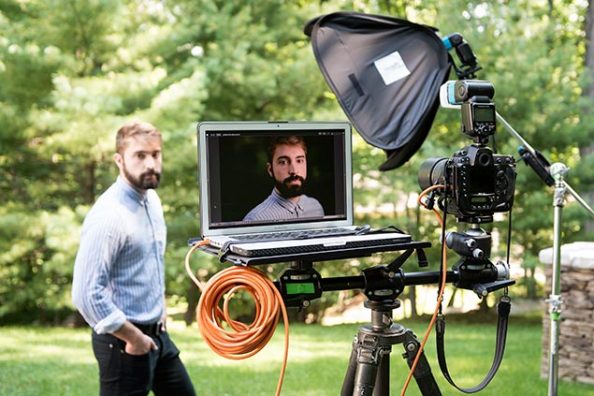

With the explosion in popularity of the CamRanger, wireless tethering is growing faster then ever. Photographers now have professional options from Nikon, Canon, EyeFi, CamRanger and others. This has led many photographers to ask us, “is it better to tether to my camera wirelessly or with a cable?” In this post, I’m going to outline some reasons that it is more advantageous to shoot with a cable. In a later this post, I’ll explore some reasons that going wireless may be a better solution.
Update: Here’s 5 more reasons you may want to consider wired over wireless.
Advantages of Shooting Wired
- Simplicity
Plug in the cable to your camera and your computer and you’re off and running. There is no messing around with wifi networks, passwords, registration codes, etc. Also, there isn’t a need to use a different proprietary software. You can still use Lightroom, Aperture, Capture One and many other photo management applications. - Speed
Probably the single biggest reason to shoot cabled is speed. A full resolution RAW file will fly down the cable and be visible on screen in less then a few seconds. And if you’re on a newer camera body and computer utilizing USB 3.0, it can be almost instantaneous. Using wireless, you can achieve this if your shooting low resolution jpegs, but more likely you’ll be shooting either a high resolution jpeg or RAW, so it will be much longer. (Check out or speed test video on YouTube) - Reliability
As long as your cable stays connected (cough cough – JerkStopper), you can keep on shooting. No matter the speed you shoot at, your images will always transfer. Shooting wirelessly, you do run a few risks – we’ve heard stories of wifi signals being blocked in certain venues, wifi connections being dropped, and batteries being drained quickly on wireless devices. With a wire, you minimize these risks. - File Ingestion
Like I alluded to in #1, you can ingest your files in real-time. That means shooting wired doesn’t just let you (or your clients) preview images on a larger screen, but you can immediately ingest them into your photo management program. This saves you the step of managing post-shoot SD and CF card uploads and increases your workflow efficiency. It also allows you to make multiple real-time onsite backups. Almost all the wireless solutions out there require you to still ingest the original files off the card after your session, especially since many wireless solutions don’t support RAW files. - Can Still Integrate Wireless Displays
Finally, you can still utilize wireless displays. If you don’t want clients looking over your shoulder/computer on set, you can still push the images out to other displays wirelessly utilizing tools like:- Apple’s Air Display – If you are tethered to a Mac or PC, you can use Apple’s Air Display to mirror your computer to a monitor via a connected AppleTV or to an iPad.
- Capture Pilot – If you use Capture One, you can use their Capture Pilot app to wirelessly display photos on an iPad.
- Lightroom Mobile – If you use Lightroom, you can send photos wirelessly to an iPad using the Lightroom Mobile App.


